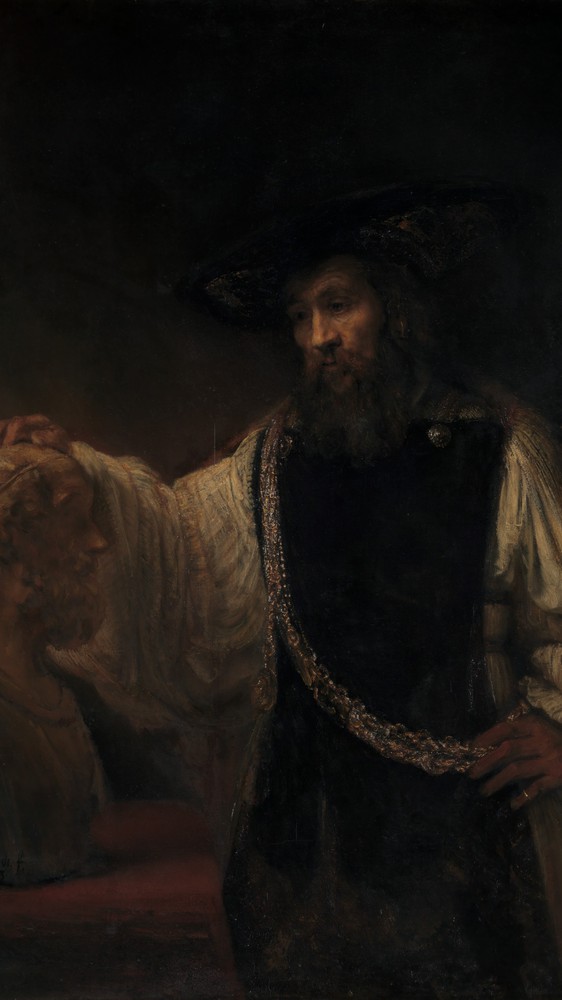Price Tag
How A Pair of Newlywed Portraits Auctioned for $182 Million
“Rembrandt’s equivalent of the 18th century ‘swagger portrait’”
Auction prices are often hard to fathom, especially when the works in question are bought by an institution (and thus likely not procured as an investment). How can a painting (or, in this case, two) possibly be worth €160 million ($182 million)? It’s tempting to look for clues in the work itself—extraordinary technique, signs of inimitable genius. But it’s often more worthwhile to direct your eyes elsewhere, specifically to the placard next to it, where you’ll find the artist’s name and the year the work was produced.
Nowhere does a name proceed someone more than the world of art. It is often the name—Da Vinci, Van Gogh, Monet, Picasso—that reaches the public consciousness, while a full understanding of the work is left behind. It is how a car commercial can use the name “Rembrandt,” without having to worry about their audience’s familiarity with the Dutch Old Master. It is also how a pair of museums can count on their purchase of two Rembrandt portraits being worth it; visitors might not know the backstory of Maerten Soolmans and Oopjen Coppit, but they know the skill of the man who painted them. And, alas, they aren’t just any portraits.
“€160 million is an impressive amount of money for a pair of Old Master portraits,” said Catherine Scallen, Associate Professor of Art History at Case Western Reserve University (and a specialist in Northern Renaissance and Baroque art). “But the 1634 portraits of the married couple Maerten Soolmans and Oopjen Coppit were the only full-length pendant portraits [i.e. portraits meant to be displayed as a pair] by Rembrandt van Rijn in private hands, and painted at the peak of his popularity. Sold by Éric de Rothschild of Paris, they had been in his family’s collection since 1878, and a Rothschild provenance is as prestigious as one can come by outside of major royalty … These are impressive portraits, in fine condition, and are Rembrandt’s equivalent of the 18th century ‘swagger portrait,’ and should prove popular with the general public.”
We know all about Rembrandt. Considered one of the finest painters in the history of art, he had a genius for realistically capturing the wonders of the world (starting with humans themselves); he is sometimes called the first “modern” artist. But who is this couple, whose likeness is now worth such a mind-boggling sum?
From Christie’s, the auctioning house that, in 2015, oversaw this private sale (as opposed to a public auction), and called it “one of the most important private sales in history”: “Born to a well-to-do Calvinist family who had fled from Antwerp to Amsterdam during the wars of religion, Maerten Soolmans (1613–1641) became acquainted with Rembrandt during his stay in Leiden from 1628 to 1633 … Maerten Soolmans married Oopjen Coppit (1611–1689) in 1633. Two years his elder, she was the orphan daughter of an old and respected Amsterdam family whose circle also included patrons of the young Rembrandt. It proved a glittering match for Soolmans, since his wife not only brought him the prestige of her ancestry, but also a colossal dowry of 35,000 guilders. This fortune easily provided the newlyweds with the necessary funds to pay for this grand commission, estimated to have cost 500 guilders for each canvas, a substantial sum at the time.”
Using current exchange rates (and some admittedly shoddy math), we can estimate that they paid about $40,000 for each portrait. That might have been a hefty amount, but not by the couple’s standards; combined, the portraits only cost about 3% of the bride’s dowry. It was a worthy investment in more ways than one. Though they were merely celebrating their marriage as many aristocrats did, Soolmans and Coppit had unwittingly guaranteed their legacy, putting their faces in front of millions of museumgoers for centuries to come—not just in one of the world’s most prestigious museums, but two of them.
“The 2015 purchase of the paintings was highly unusual: it was a joint purchase by the Louvre in Paris, and the Rijksmuseum in Amsterdam, representing the countries where the paintings have long resided and where they originated,” said Scallen. “A museum purchase of this magnitude means that the paintings will never again appear on the art market, but they were nonetheless a true investment for these museums. They add a new element each museum’s existing collections of Rembrandt paintings and thus add to the luster of each museum’s collection. Indeed, the director of the Rijksmuseum, Taco Dibbits, said that these were the most important Rembrandt paintings to come on the market since 1961, when the Metropolitan Museum of Art acquired Aristotle Contemplating a Bust of Homer at auction.”
To see the portraits in person, you’ll have to check both museum’s calendars; the portraits are alternating between the two. Because it’s stipulated that the pair will have to be shown together, the Louvre and the Rijksmuseum will be forced to work through their own marriage, of sorts. In this way, the pendant portraits may even help pave the way for a new sort of template in international art buying.






